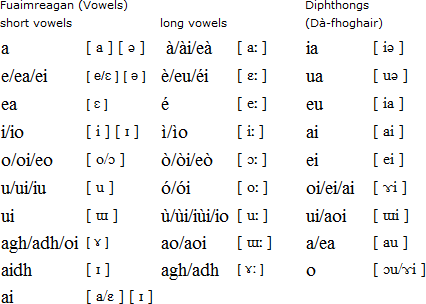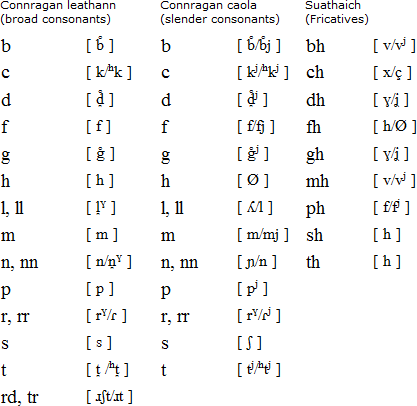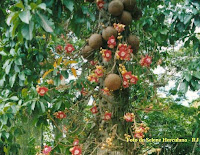| EM MEU OFÍCIO OU ARTE TACITURNA Em meu ofício ou arte taciturna
Exercido na noite silenciosa
Quando somente a lua se enfurece
E os amantes jazem no leito
Com todas as suas mágoas nos braços,
Trabalho junto à luz que canta
Não por glória ou pão
Nem por pompa ou tráfico de encantos
Nos palcos de marfim
Mas pelo mínimo salário
De seu mais secreto coração. Escrevo estas páginas de espuma
Não para o homem orgulhoso
Que se afasta da lua enfurecida
Nem para os mortos de alta estirpe
Com seus salmos e rouxinóis,
Mas para os amantes, seus braços
Que enlaçam as dores dos séculos,
Que não me pagam nem me elogiam
E ignoram meu ofício ou minha arte.
(tradução: Ivan Junqueira)
. ESTE LADO DA VERDADE Para Llewlyn Este lado da verdade,
Meu filho, tu não podes ver,
Rei de teus olhos azuis
No país que cega a tua juventude,
Que está todo por fazer,
Sob os céus indiferentes
Da culpa e da inocência
Antes que tentes um único gesto
Com a cabeça e o coração,
Tudo estará reunido e disperso
Nas trevas tortuosas
Como o pó dos mortos. O bom e o mau, duas maneiras
De caminhar em tua morte
Entre as triturantes ondas do mar,
Rei de teu coração nos dias cegos,
Se dissipam com a respiração,
Vão chorando através de ti e de mim (tradução: Ivan Junqueira)
. POEMA DE OUTUBRO Era o meu trigésimo ano rumo ao céu
Quando chegou aos meus ouvidos, vindo do porto
e do bosque ao lado,
E da praia empoçada de mexilhões
E sacralizada pelas garças
O aceno da manhã Com as preces da água e o grito das gralhas e gaivotas
E o chocar-se dos barcos contra o muro emaranhado de redes
Para que de súbito
Me pusesse de pé
E descortinasse a imóvel cidade adormecida. Meu aniversário começou com as aves marinhas
E os pássaros das árvores aladas esvoaçavam o meu nome
Sobre as granjas e os cavalos brancos
E levantei-me
No chuvoso outono
E perambulei sem rumo sob o aguaceiro de todos os meus dias.
A garça e a maré alta mergulhavam quando tomei a estrada
Acima da divisa
E as portas da cidade
Ainda estavam fechadas enquanto o povo despertava. Toda uma primavera de cotovias numa nuvem rodopiante
E os arbustos à beira da estrada transbordante de gorjeios
De melros e o sol de outubro
Estival
Sobre os ombros da colina,
Eram climas amorosos e houve doces cantores
Que chegaram de repente na manhã pela qual eu vagava e ouvia
Como se retorcia a chuva
O vento soprava frio No bosque ao longe que jazia a meus pés.
Pálida chuva sobre o porto que encolhia
E sobre o mar que umedecia a igreja do tamanho de um caracol
Com seus cornos através da névoa e do castelo
Encardido como as corujas Mas todos os jardins
Da primavera e do verão floresciam nos contos fantásticos
Para além da divisa e sob a nuvem apinhada de cotovias.
Ali podia eu maravilhar-me
Meu aniversário Ia adiante mas o tempo girava em derredor. Ao girar me afastava do país em júbilo
E através do ar transfigurado e do céu cujo azul se matizava
Fluía novamente um prodígio do verão
Com maçãs
Pêras e groselhas encarnadas
E no girar do tempo vi tão claro quanto uma criança
Aquelas esquecidas manhãs em que o menino passeava com sua mãe Em meio às parábolas
Da luz solar
E às lendas da verde capela E pêlos campos da infância duas vezes descritos
Pois suas lágrimas me queimavam as faces e seu coração
se enternecia em mim.
Esses eram os bosques e o rio e o mar
Ali onde um menino
À escuta
Do verão dos mortos sussurrava a verdade de seu êxtase
Às árvores e às pedras e ao peixe na maré.
E todavia o mistério
Pulsava vivo Na água e nos pássaros canoros. E ali podia eu maravilhar-me com meu aniversário
Que fugia, enquanto o tempo girava em derredor. Mas a verdadeira
Alegria da criança há tanto tempo morta cantava
Ardendo ao sol.
Era o meu trigésimo ano
Rumo ao céu que então se imobilizara no meio-dia do verão
Embora a cidade repousasse lá embaixo coberta de folhas no sangue de outubro. Oh, pudesse a verdade de meu coração
Ser ainda cantada
Nessa alta colina um ano depois. .(tradução: Ivan Junqueira) . AMOR NO HOSPÍCIO Uma estranha chegou
A dividir comigo um quarto nessa casa que anda mal da cabeça,
Uma jovem louca como os pássaros Que trancava a porta da noite com seus braços, suas plumas.
Espigada no leito em desordem
Ela tapeia com nuvens penetrantes a casa à prova dos céus Até iludir com seus passos o quarto imerso em pesadelo,
Livre como os mortos,
Ou cavalga os oceanos imaginários do pavilhão dos homens. Chegou possessa
Aquela que admite a ilusória luz através do muro saltitante,
Possuída pêlos céus
Ela dorme no catre estreito, e no entanto vagueia na poeira
E no entanto delira à vontade
Sobre as tábuas do manicômio aplainadas por minhas lágrimas deâmbulas.
E arrebatado pela luz de seus braços, enfim, meu Deus, enfim
Posso de fato
Suportar a primeira visão que incendeia as estrelas. .(tradução: Ivan Junqueira) . MORTES E ENTRADAS Quase às vésperas incendiárias
De várias mortes próximas,
Quando alguém ante os despojos de quem mais amaste,
E desde sempre conhecido, tenha de abandonar
Os leões e as flamas de sua volátil respiração,
Quem dentre os teus amigos imortais
Elevaria o som dos órgãos do pó inventariado
Para lançar e cantar os teus louvores,
O que mais fundo os invocasse conquistaria a sua paz
Que não pode se afogar ou se esvair
Sem fim junto à sua chaga Nas muitas e alienantes dores
conjugais de Londres. Quase às vésperas incendiárias
Quando diante de teus lábios e chaves,
Fechando, abrindo, se entrelacem os estranhos assassinados,
Aquele que é o mais desconhecido,
Teu vizinho, a estrela polar, sol de uma outra rua,
Mergulhará em tuas lágrimas.
Ele há de banhar teu sangue chuvoso no másculo oceano
Que percorrerá teu próprio morto
E fará girar sua esfera fora de teu fio de água
E entupirá as gargantas das conchas
Com todos os gritos desde que a luz
Começou a jorrar através de seus olhos tonitruantes. Quase às vésperas incendiárias
De mortes e entradas,
Quando próximo e estranho, ferido nas ondas de Londres,
Hajas procurado a tua tumba solitária,
Um inimigo entre muitos, que bem sabe
Como cintila o teu coração
Nas trevas vigiadas, pulsando entre furnas e ferrolhos,
Arrancará os raios
Para tapar o sol, mergulhará, galgará tuas teclas sombrias
E fará definhar os ginetes para que recuem,
Até que aquele despojo adorado
Avulte como o último Sansão de teu zodíaco. .(tradução: Ivan Junqueira) . A LUZ IRROMPE ONDE NENHUM SOL BRILHA A luz irrompe onde nenhum sol brilha;
onde não se agita qualquer mar, as águas do coração
impelem as suas marés;
e, destruídos fantasmas com o fulgor dos vermes nos cabelos,
os objectos da luz
atravessam a carne onde nenhuma carne reveste os ossos. Nas coxas, uma candeia
aquece as sementes da juventude e queima as da velhice;
onde não vibra qualquer semente,
arredonda-se com o seu esplendor e junto das estrelas
o fruto do homem;
onde a cera já não existe, apenas vemos o pavio de uma candeia. A manhã irrompe atrás dos olhos;
e da cabeça aos pés desliza tempestuoso o sangue
como se fosse um mar;
sem ter defesa ou protecção, as nascentes do céu
ultrapassam os seus limites
ao pressagiar num sorriso o óleo das lágrimas. A noite, como uma lua de asfalto,
cerca na sua órbita os limites dos mundos;
o dia brilha nos ossos;
onde não existe o frio, vem a tempestade desoladora abrir
as vestes do inverno;
a teia da primavera desprende-se nas pálpebras. A luz irrompe em lugares estranhos,
nos espinhos do pensamento onde o seu aroma paira sob a chuva;
quando a lógica morre,
o segredo da terra cresce em cada olhar
e o sangue precipita-se no sol;
sobre os campos mais desolados, detém-se o amanhecer. ( tradução: Fernando Guimarães) . E A MORTE PERDERÁ O SEU DOMÍNIO E a morte perderá o seu domínio.
Nus, os homens mortos irão confundir-se
com o homem no vento e na lua do poente;
quando, descarnados e limpos, desaparecerem os ossos
hão-de nos seus braços e pés brilhar as estrelas.
Mesmo que se tornem loucos permanecerá o espírito lúcido;
mesmo que sejam submersos pelo mar, eles hão-de ressurgir;
mesmo que os amantes se percam, continuará o amor;
e a morte perderá o seu domínio. E a morte perderá o seu domínio.
Aqueles que há muito repousam sobre as ondas do mar
não morrerão com a chegada do vento;
ainda que, na roda da tortura, comecem
os tendões a ceder, jamais se partirão;
entre as suas mãos será destruída a fé
e, como unicórnios, virá atravessá-los o sofrimento;
embora sejam divididos eles manterão a sua unidade;
e a morte perderá o seu domínio. E a morte perderá o seu domínio.
Não hão-de gritar mais as gaivotas aos seus ouvidos
nem as vagas romper tumultuosamente nas praias;
onde se abriu uma flor não poderá nenhuma flor
erguer a sua corola em direcção à força das chuvas;
ainda que estejam mortas e loucas, hão-de descer
como pregos as suas cabeças pelas margaridas;
é no sol que irrompem até que o sol se extinga,
e a morte perderá o seu domínio.
( tradução: Fernando Guimarães) . A MÃO AO ASSINAR ESTE PAPEL A mão ao assinar este papel arrasou uma cidade;
cinco dedos soberanos lançaram a sua taxa sobre a respiração; duplicaram o globo dos mortos e reduziram a metade um país;
estes cinco reis levaram a morte a um rei. A mão soberana chega até um ombro descaído
e as articulações dos dedos ficaram imobilizadas pelo gesso;
uma pena de ganso serviu para pôr fim à morte
que pôs fim às palavras. A mão ao assinar o tratado fez nascer a febre,
e cresceu a fome, e todas as pragas vieram;
maior se torna a mão que estende o seu domínio
sobre o homem por ter escrito um nome. Os cinco reis contam os mortos mas não acalmam
a ferida que está cicatrizada, nem acariciam a fronte;
há mãos que governam a piedade como outras o céu;
mas nenhuma delas tem lágrimas para derramar. ( tradução: Fernando Guimarães) . ESTE PÃO QUE VENHO ABRIR Este pão que venho abrir foi outrora centeio,
este vinho sobre uma ramada desconhecida
ficou submerso nos seus frutos;
o homem em cada dia, em cada noite o vento
arrancaram a alegria dos cachos e derrubaram as searas. Com o vinho, outrora o sangue de estio
palpitava na carne que ornamentava a videira,
outrora neste pão
era feliz sob o vento o centeio;
mas o homem despedaçou o sol e abateu o vento. Esta carne que despedaças, este sangue
que traz a desolação pelas veias,
eram os cachos e o centeio
nascidos das raízes e da seiva dos sentidos;
este meu vinho que bebes, este pão de que te alimentas. ( tradução: Fernando Guimarães) . A FORÇA QUE IMPELE
ATRAVÉS DO VERDE RASTILHO A força que impele através do verde rastilho a flor
impele os meus verdes anos; a que aniquila as raízes das árvores
é o que me destrói.
E não tenho voz para dizer à rosa que se inclina
como a minha juventude se curva sob a febre do mesmo inverno. A força que impele a água através das pedras
impele o meu rubro sangue; a que seca o impulso das correntes
deixa as minhas como se fossem de cera.
E não tenho voz para que os lábios digam às minhas veias
como a mesma boca suga as nascentes da montanha. A mão que faz oscilar a água no pântano
agita ainda mais a areia; a que detém o sopro do vento
levanta as velas do meu sudário.
E não tenho voz para dizer ao homem enforcado
como da minha argila é feito o lodo do carrasco. Como sanguessugas, os lábios do tempo unem-se à fonte;
fica o amor intumescido e goteja, mas o sangue derramado
acalmará as suas feridas.
E não tenho voz para dizer ao dia tempestuoso
como as horas assinalam um céu à volta dos astros. E não tenho voz para dizer ao túmulo da amada como sobre o meu sudário rastejam os mesmos vermes. ( tradução: Fernando Guimarães)
. 
| 






















































